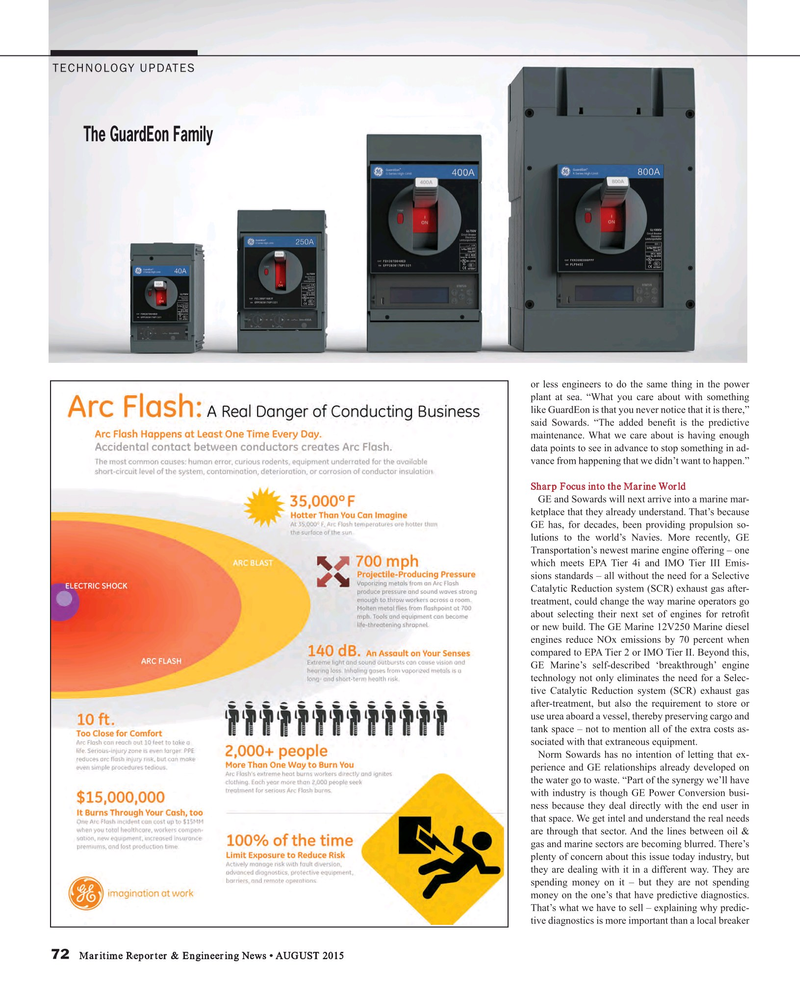
Page 72: of Maritime Reporter Magazine (August 2015)
Shipyard Edition
Read this page in Pdf, Flash or Html5 edition of August 2015 Maritime Reporter Magazine
TECHNOLOGY UPDATES
The GuardEon Family or less engineers to do the same thing in the power plant at sea. “What you care about with something like GuardEon is that you never notice that it is there,” said Sowards. “The added bene? t is the predictive maintenance. What we care about is having enough data points to see in advance to stop something in ad- vance from happening that we didn’t want to happen.”
Sharp Focus into the Marine World
GE and Sowards will next arrive into a marine mar- ketplace that they already understand. That’s because
GE has, for decades, been providing propulsion so- lutions to the world’s Navies. More recently, GE
Transportation’s newest marine engine offering – one which meets EPA Tier 4i and IMO Tier III Emis- sions standards – all without the need for a Selective
Catalytic Reduction system (SCR) exhaust gas after- treatment, could change the way marine operators go about selecting their next set of engines for retro? t or new build. The GE Marine 12V250 Marine diesel engines reduce NOx emissions by 70 percent when compared to EPA Tier 2 or IMO Tier II. Beyond this,
GE Marine’s self-described ‘breakthrough’ engine technology not only eliminates the need for a Selec- tive Catalytic Reduction system (SCR) exhaust gas after-treatment, but also the requirement to store or use urea aboard a vessel, thereby preserving cargo and tank space – not to mention all of the extra costs as- sociated with that extraneous equipment.
Norm Sowards has no intention of letting that ex- perience and GE relationships already developed on the water go to waste. “Part of the synergy we’ll have with industry is though GE Power Conversion busi- ness because they deal directly with the end user in that space. We get intel and understand the real needs are through that sector. And the lines between oil & gas and marine sectors are becoming blurred. There’s plenty of concern about this issue today industry, but they are dealing with it in a different way. They are spending money on it – but they are not spending money on the one’s that have predictive diagnostics.
That’s what we have to sell – explaining why predic- tive diagnostics is more important than a local breaker 72 Maritime Reporter & Engineering News • AUGUST 2015
MR #8 (66-73).indd 72 MR #8 (66-73).indd 72 8/5/2015 11:47:10 AM8/5/2015 11:47:10 AM

 71
71

 73
73
